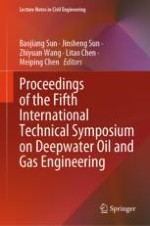2024 | OriginalPaper | Chapter
Bottomhole Pressure Inversion Method for Open-Circuit Drilling Based on Drilling Fluid Return Height
Authors : Gang Chen, Zhengfeng Shan, Xiansi Wang, Jie Zhong, Zhiyuan Wang
Published in: Proceedings of the Fifth International Technical Symposium on Deepwater Oil and Gas Engineering
Publisher: Springer Nature Singapore
Activate our intelligent search to find suitable subject content or patents.
Select sections of text to find matching patents with Artificial Intelligence. powered by
Select sections of text to find additional relevant content using AI-assisted search. powered by
